Woman spends 738 days living in giant redwood to keep loggers from cutting it down. Who won?
Science
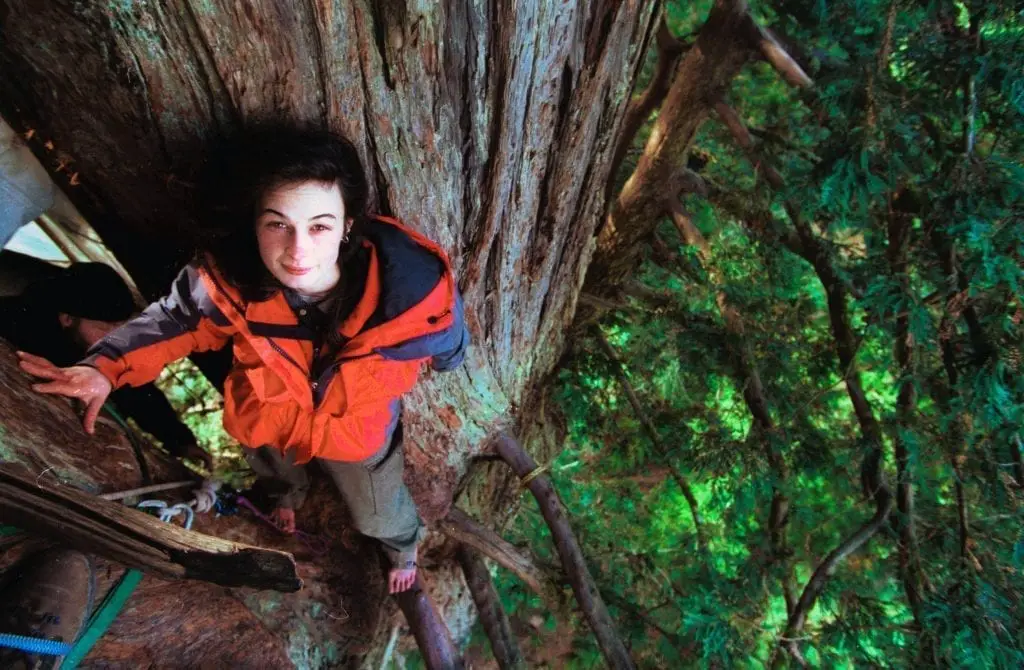
1. If Julia had known what she was getting into, she wouldn’t have climbed that tree
Timeline
For over two years, Julia lived in an enormously tall tree. She endured threats, harassment, and attempted starvation to keep the tree from getting cut down. But as the discomforts and difficulties kept coming, could she stay long enough to keep the tree from falling. Would the loggers ever relent?
A seven-year-old Julia Hill was hiking with her family when a butterfly landed on her hand. It stayed close to her all day, hence the origin of her nickname “Butterfly.” Little did she know that the name would follow her up a giant redwood tree and a 738-day journey of immense hardship.

Carl-John Veraja/Wikimedia Commons
“If I had seen what was coming, I would’ve went screaming in the other direction,” Julia Butterfly Hill said years later. “But life doesn’t give it to us that way; it just gives it to us moment by moment, day by day. We show up and give it the best that we can.”
2. Julia grew up traveling in a camping trailer, going city to city
Julia’s non-traditional life started long before she first set foot in a redwood tree. She was raised in a camping trailer with her family, traveling from city to city for her dad’s work. They were very poor; she wore hand me down clothes and people gave them food on the road.
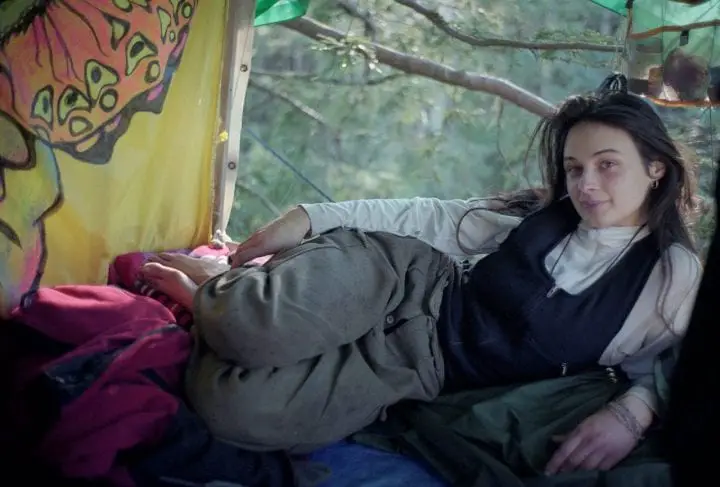
Timeline
From a young age, Julia didn’t have many possessions. She was limited by the confines of their trailer, which made her future tree-sitting easier. Always a headstrong child, perhaps it only made sense that she ended up in that tree. She was strong-willed enough to stay as long as she possibly could.
3. For a few years, Julia was motivated only by money until something tragic happened
For a few years, Julia tried to grapple with the challenges of living with limited resources and opportunities. As she grew older and entered the rocky years of her teens, she became ashamed of her family’s lifestyle. She went to college and majored in business, yearning to live a different life different than that which she’d grown up with.
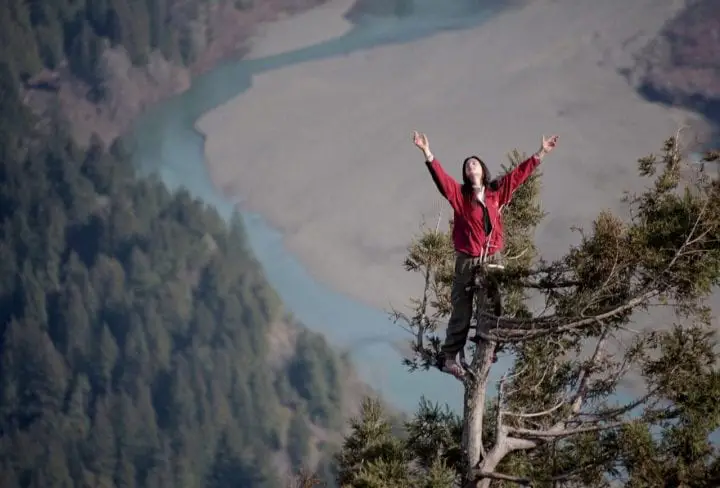
Timeline
Julia worked in the restaurant business, thinking only of the money she could make. But then a sudden accident caused her to completely rethink her life. She didn’t know it at the time, but this tragedy would send her to the highest branches of an ancient tree, where she would refuse to come down.
4. A car crash made Julia reevaluate her life
A car collided with Julia’s in 1996. Her head slammed into the steering wheel, giving her severe injuries and brain damage. At 22, she had to spend 10 months recovering. Angry and frustrated, Julia was forced to contend with herself. She had almost died and realized she was disappointed with her life so far.
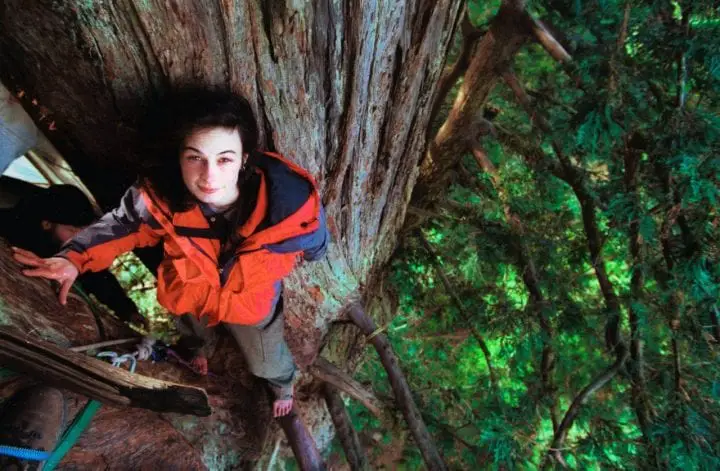
Timeline
“The steering wheel in my head, both figuratively and literally, steered me in a new direction in my life,” Julia later said. She wanted a purpose, so she decided to travel to find it. She had no idea what was going to give her life meaning. And then, she found the redwoods.
5. Julia found her purpose in the coastal redwood forests
Not long after Julia recovered from the car crash, she set off on what would be a life-changing road trip to the West Coast. Once she got to Humboldt County, California and the magnificent redwood forests, Julia felt a calling.
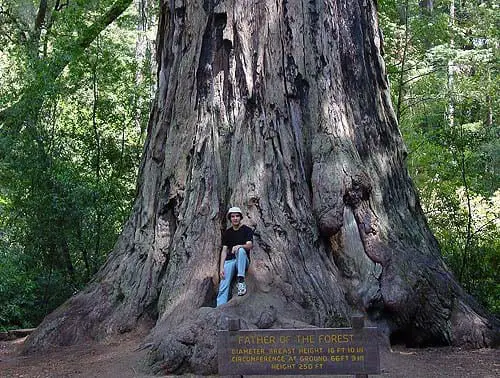
TheXtraordinary
She ditched her road trip buddies and headed into the forest. Among the immensely tall trees and fresh natural air, Julia felt truly alive for the first time. But the sweet moment turned sour when she learned vast expanses of these trees were being cut down. She had to do something about it, she just didn’t know what it was at the time.
6. She found a group of protestors to volunteer with
After selling most of her possessions in Arkansas, Julia returned to California in November of 1997, determined to do whatever she could to protect the redwood forests from being cut down. She found her way to a group of activists camped out in the forests of Humboldt County.
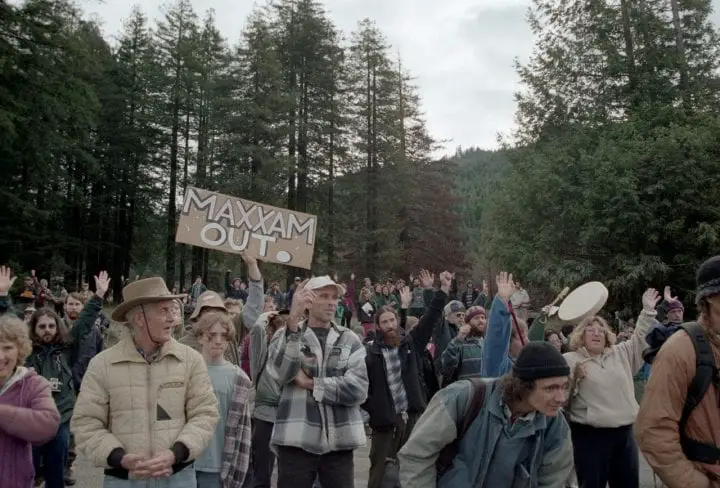
Timeline
The group was a little disorganized, but they were focused on keeping people up in trees, to ensure they wouldn’t be cut down (aka tree-sitting). Julia, however, was having a hard time finding something helpful to do. She cooked and cleaned at the base camp, but it didn’t feel like she was doing enough. Then, someone asked for volunteers to tree-sit.
7. Julia used the name “Butterfly” to protect her identity
Once Julia entered the world of activists and civil disobedience, she began going by her old nickname of “Butterfly.” It was her “forest name,” which most of the activists used to protect their identities. Technically, they were trespassing on the Pacific Lumber Company’s land during their tree-sits.
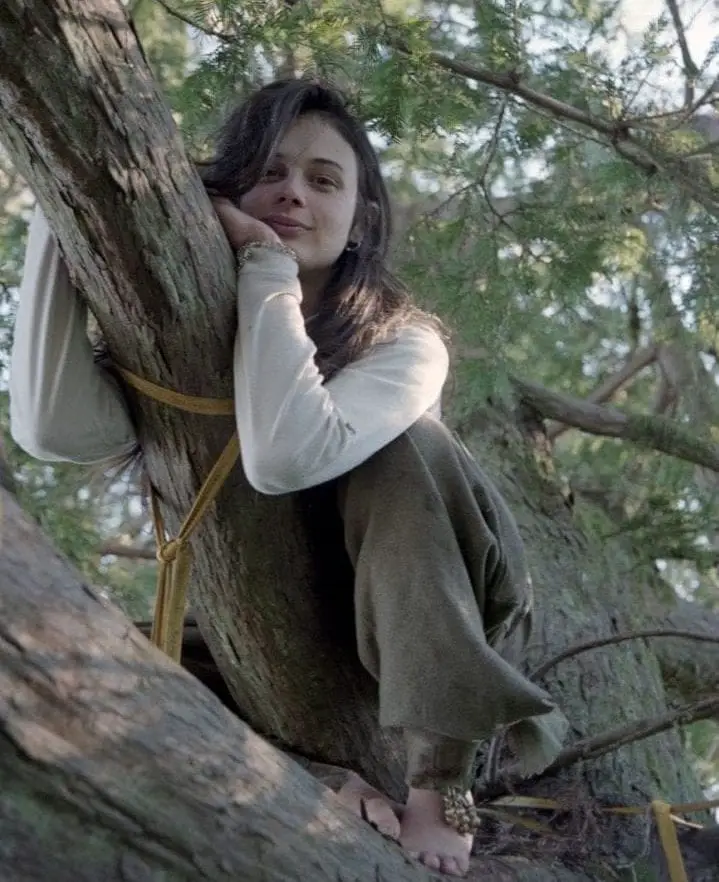
Timeline
Activists are often greeted with threats and violence. One group was protesting in favor of the forest when police officers activated pepper spray directly on their faces. Environmental activism was not a world of comfort or safety. Julia soon learned of the dangers she was getting herself into, as she arrived at the base of the tree.
8. Despite her lack of experience, Julia volunteered to do a five-day tree sit
Julia didn’t know much about tree sitting, but she did know that it was about protecting the forest. So when a man named “Almond” came by asking for volunteers to sit in a tree for “a long period of time” of at least five days, she jumped at the chance. No one else volunteered, so she was picked despite her lack of climbing experience and knowledge.
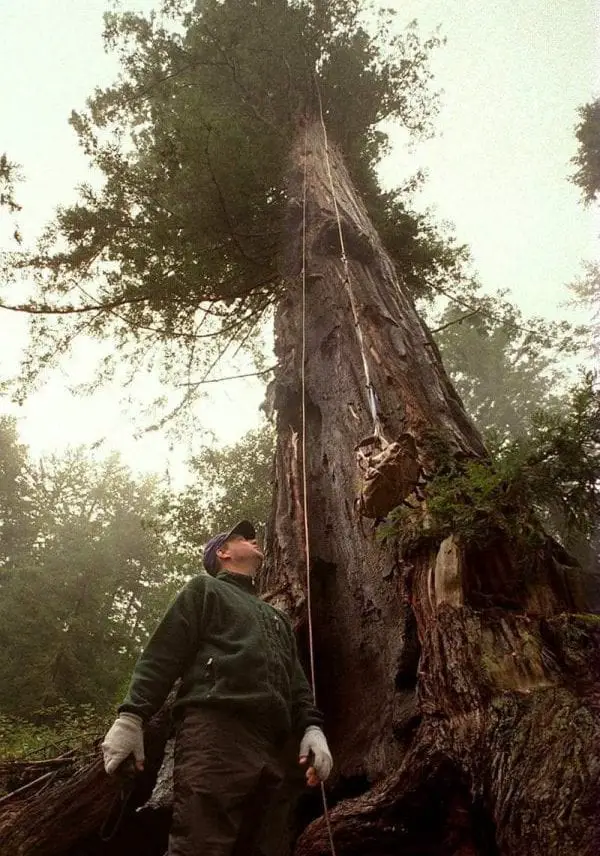
Press Democrat
After hiking two hours uphill, Julia and her two fellow tree-sitters finally got to the giant redwood called Luna. The activists taught her how to use a harness and rope to climb, and then up she went. She had no idea what was in store atop the tree, or what would soon transpire on the ground.
9. The tree “Luna” was supposed to be chopped down, but Julia wouldn’t let that happen
The first tree-sit was a short five days. Julia became sick and needed to come down, recovering on the ground. But as soon as they needed more people to occupy Luna’s lofty branches, she was yet again the first to volunteer. Julia soon learned that these tree-sits were orchestrated by Earth First!, an environmentalist group.
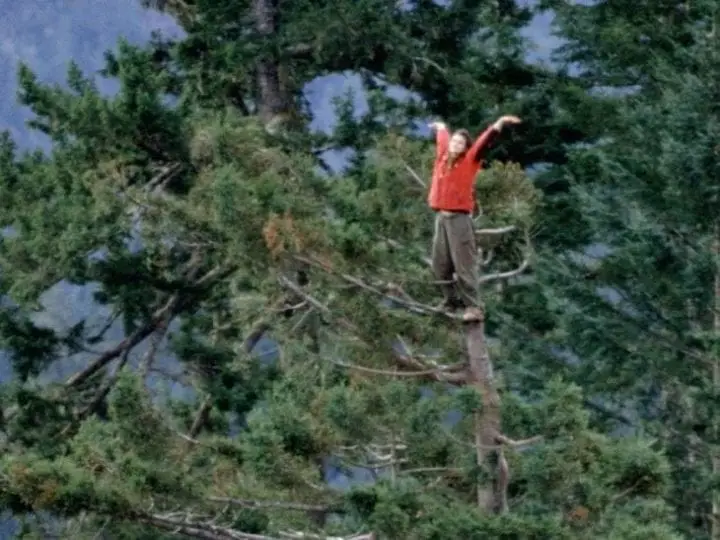
Recreoviral
Luna had been marked for chopping, but Julia wanted to do whatever she could to keep the ancient tree from being cut down. So on December 10, 1997, Julia climbed up into its branches. But would she be able to endure the difficult lifestyle long enough to keep Luna from being cut down?
10. Loggers were waiting at the tree for the activists
Julia arrived at Luna with two other tree-sitters, but loggers were already at the base of the tree harassing and intimidating them into an argument. Only Julia and one other activist managed to climb into the tree. The next day, the Pacific Lumber Company cut down two nearby trees and told Julia she better come down because they were going to cut down Luna as well.

Recreoviral
Of course, being a tree-sitter, Julia did not come down. For two years, the Pacific Lumber Company was Julia’s nemesis. The company owned Luna and the land it stood on, but they could hardly chop it down while people were up in its branches. That would be, well, murder. So she sat, determined to save the ancient tree in an epic stalemate.
11. Pacific Lumber Company was clearcutting trees in the county
Pacific Lumber Company had once been a family owned affair, logging in a sustainable and small fashion, but that all changed in 1985 when a Texan company (Maxxam) bought them. To pay off the debt incurred from the purchase, Maxxam had Pacific Lumber start chopping down every tree in large sections of the forest, a process known as clear-cutting.
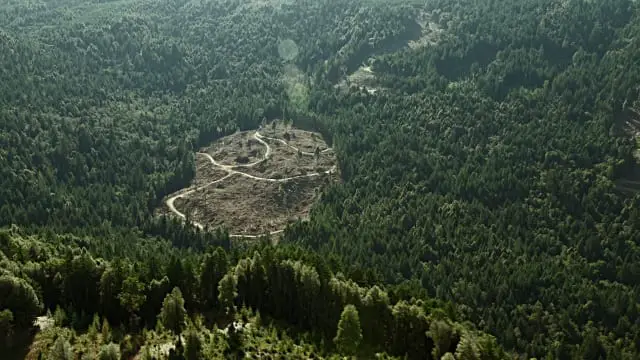
Getty Images
Maxxam owned the largest expanse of old-growth redwood trees in the world, an area called the Headwaters Forest. “Old-growth” forests are forests that have developed for a long time without significant changes, like fires. If these trees were all chopped down, it would take thousands of years before the forest could ever look the same again. Luna was one of the oldest.
12. The tree was over a thousand years old and 20 stories tall
Luna, the tree of much contention, was 180 feet tall. That’s about 20 stories if it were a building. The base of the trunk was 16 feet wide and the tree was definitely over 1000 years old, possibly even as old as 1800. If Luna were cut down, its wood would be worth $150,000.
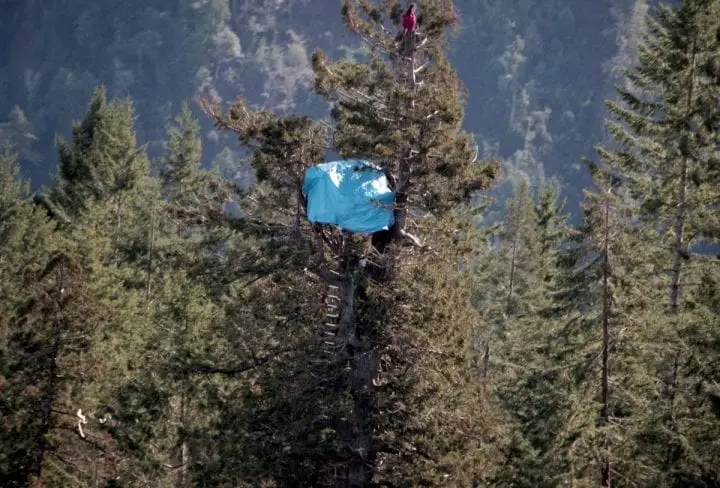
Timeline
The Earth First! activists named the tree “Luna” one night when they were hauling platforms up and into its highest branches. The full moon lit their illicit activities. From then on, the activists began a nonstop occupation of the ancient tree, rotating people up and down until one stubborn person just wouldn’t leave. They were determined to keep it from getting cut down.
13. Julia lived on cramped platforms with few belongings
Up in the tree, Julia lived on two six-by-eight foot platforms. They were secured to the tree trunk and covered with tarps and cloth. The little shelter was very close to the top of the dizzyingly tall tree; a little blue tent among the leaves. Up there, she cooked food on a single burner and kept herself clean with a sparse inventory of cloths and rags.
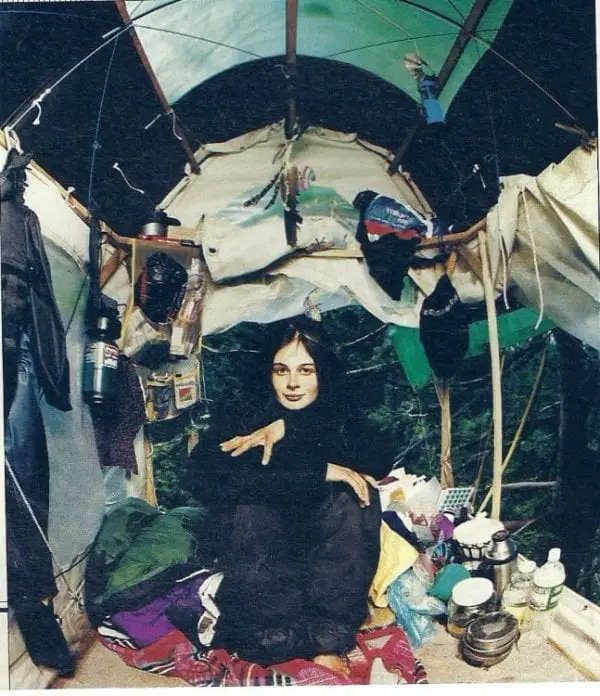
Recreoviral
Julia climbed down and up the tree for exercise, slept in a sleeping bag, and communicated with people via cell phone. Three times a week, a team from Earth First! brought her new supplies and hauled away her waste. She lit candles for light, spending her time reading and researching. To Julia, it was all worth it if she could just keep the tree safe.
14. Pacific Lumber intimidated Julia with helicopters
About a month after climbing up, Julia’s tree-sitting companion climbed down. Now, she was alone. But Pacific Lumber Company didn’t leave her by herself for long; “Wake up! Get ready for a bad hair day,” a logger shouted at her one day. A helicopter came into view moments later.
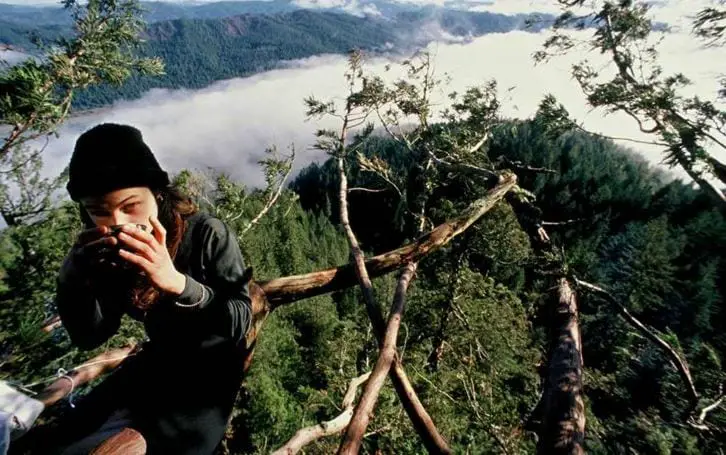
Recreoviral
The helicopter was ripping branches off the trees with the force of its extremely loud, spinning blades. But Julia stayed through the harassment. She videotaped it and sent the clip to the Federal Aviation Administration, who told Pacific Lumber to stop. It’s illegal to fly a helicopter so close to a person. But they were trying to do whatever they could to get her down.
15. The other activists wanted Julia to come down from the tree
Not only did Julia have to contend with Pacific Lumber, but Earth First! also wanted Julia to come down. They were worried about her safety — if anything happened to her, it would look bad for them. Plus, they didn’t think they had the resources to keep supporting her.
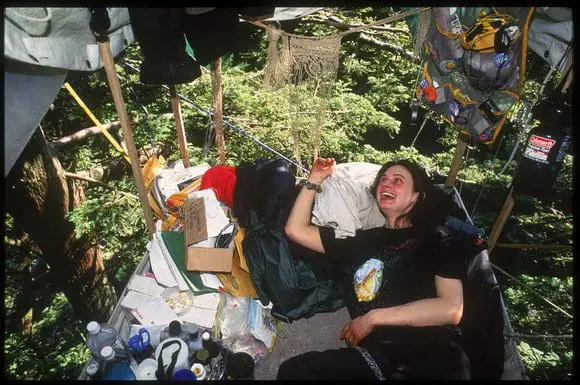
Recreoviral
Julia, however, didn’t really consider herself a member of their organization. She wanted to stay until she was sure that Luna wouldn’t be cut down. And so she convinced her friend to keep supplying her if Earth First! wouldn’t. But Pacific Lumber had new plans for getting her out of the tree: they wanted to starve her out.
16. Pacific Lumber tried to starve Julia out of the tree
Pacific Lumber continued their harassment. They sent security guards to surround the tree and keep activists from bringing Julia more food. It worked — for ten days. They stopped several people from sending up supplies. But then Julia and 19 Earth First! members created a plan.
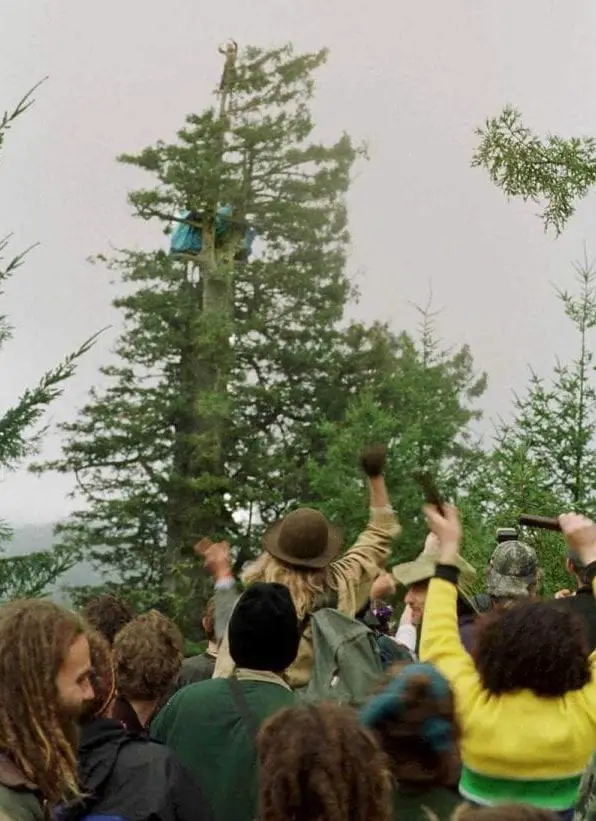
Press Democrat
They orchestrated a diversion, which was easy considering there were only three security guards on duty. One had even developed a crush on Julia, so he wasn’t much of a threat. During the shouts and confusion, the team sent supplies up to Julia. Within a day or two, the security guards were gone. A massive storm was coming and the activists had left with a “See you next week!”
17. A massive storm almost ended Julia’s tree sitting
The storm nearly killed Julia. It was 18 hours of howling wind and freezing rain. It knocked her around and she almost fell out of the tree. The wind was so strong it tilted her platform to an precarious angle. She was drenched.
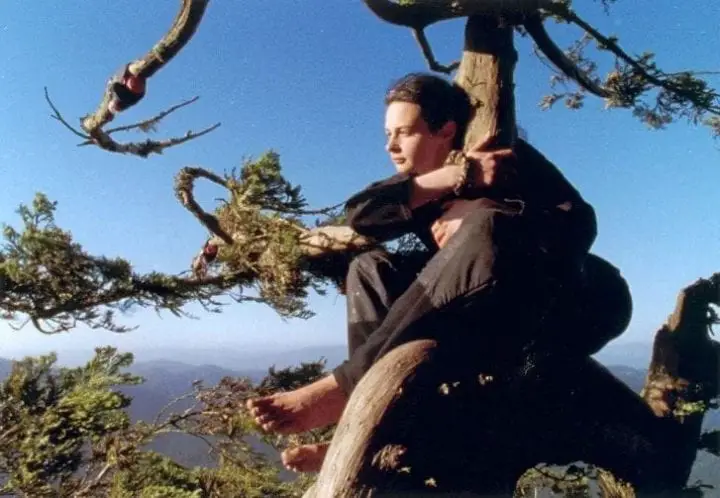
Recreoviral
On day 71, a photographer visited Julia high up in the clouds. He suggested she should break the record for tree-sitting length (90 days) by staying up there for 100 days. She had wanted to get more media interested in covering the redwood forest destruction and this seemed like the best way to do that. People love record-breaking stories.
18. Julia did countless interviews to raise awareness of the clear-cutting
Julia was on the radio, interviewed via her cell phone. She wrote press releases and got hundreds of letters each week. She responded to all of them. People came up and filmed her (multiple documentaries were made about her tree-sitting). She was on TV.
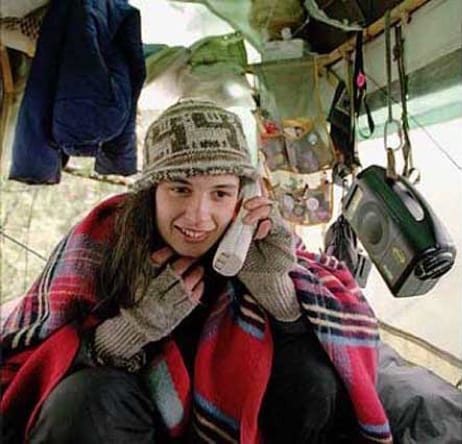
TheXtraordinary
The record-breaking effort was working to get the attention she wanted. Julia continued to talk about how she wanted Luna to stay standing, logging to slow down, and awareness of the forest’s problems to grow. But all the while she was in Luna, loggers were cutting trees down around her. Luna would be next, once Julia came down.
19. Julia decided to stay indefinitely in the tree
Then the 100th day came…and went. Julia shocked everyone by saying she was going to stay in the tree. Pacific Lumber said they would wait her out. And so a 180-foot game of chicken began. Meanwhile, nearby trees were toppling. Some of them were so close they even hit Luna while falling.
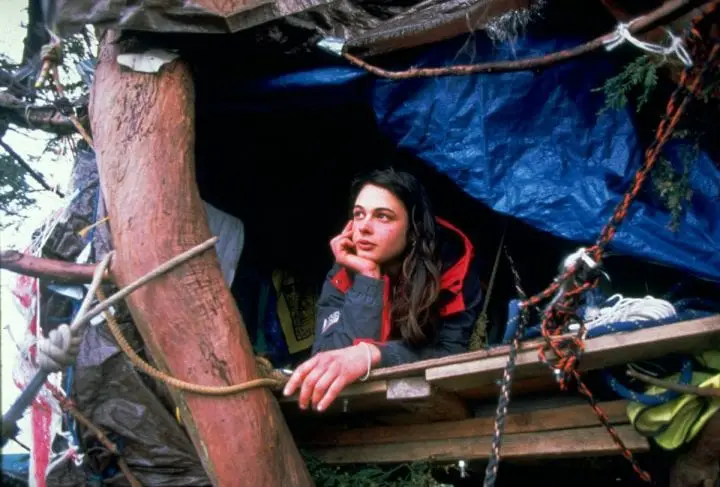
Timeline
The noise, in particular, bothered Julia: the chainsaw, the pounding, and then the long creak of the tree falling. In March of 1998, Julia began calling the president of Pacific Lumber Company, John Campbell. He didn’t return her calls until July. Finally, they could begin some sort of negotiation.
20. 95% of all old-growth redwood forests have been cut down
While the media focused on Julia and Luna, this feud went beyond the single tree. The logging industry and environmental activism have a history steeped in animosity. Redwoods have lived in North America for more than 144 million years, but since the 1850s, 95 percent of all the old-growth redwood forests in the world have been chopped down. This was about saving lives — of trees, endangered species, and humans, too.
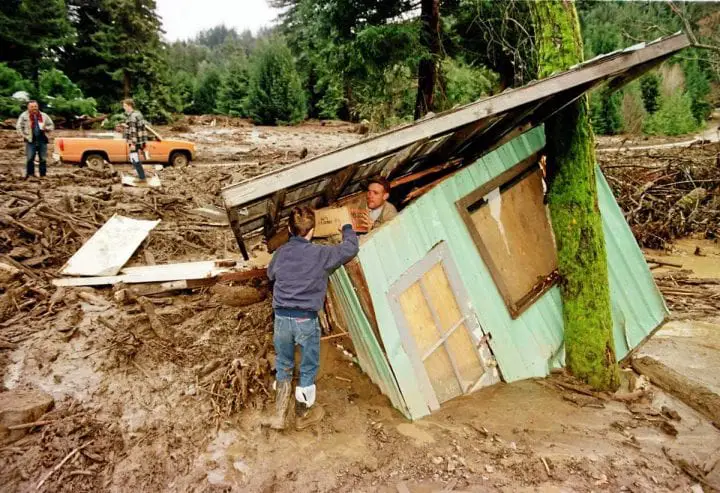
Times-Standard
Not long before Julia climbed the tree, a massive mudslide had destroyed 10 houses in the nearby town of Stafford. People believed the clear-cutting on the hill above town caused the ground to give way. So Julia was willing to stay forever if it meant keeping trees from getting cut down.
21. Julia was harassed and threatened by loggers
As Julia’s first year in Luna dragged on, the conflict escalated. Loggers threatened and harassed her and the other Earth First! activists. The Pacific Lumber Company received over a hundred notices of their environmental violations and the California Department of Forestry suspended their logging license.
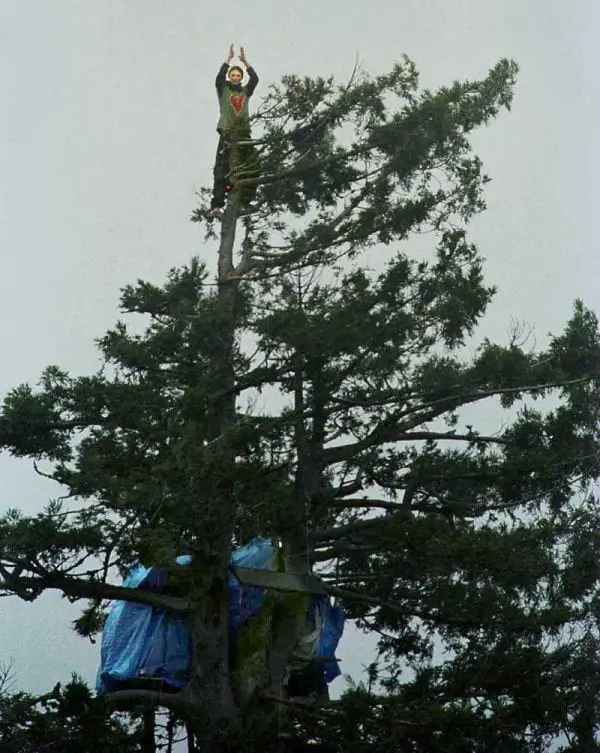
Press Democrat
Perhaps for a moment, it felt like a win—maybe now that their license was suspended, Julia could come down and Luna would be safe. But Pacific Lumber got their license back within a few weeks. In a futile and almost childish act, Pacific Lumber nailed an eviction notice to Luna’s trunk. Julia did not come down.
22. Pacific Lumber and Julia negotiated a deal to save Luna from being cut down
In February of 1999, Pacific Lumber’s president John Campbell showed up at Julia’s proverbial door with a six-pack of Pepsi. The two began negotiations to get Julia out of the tree and in a couple of months, they had an agreement written up.
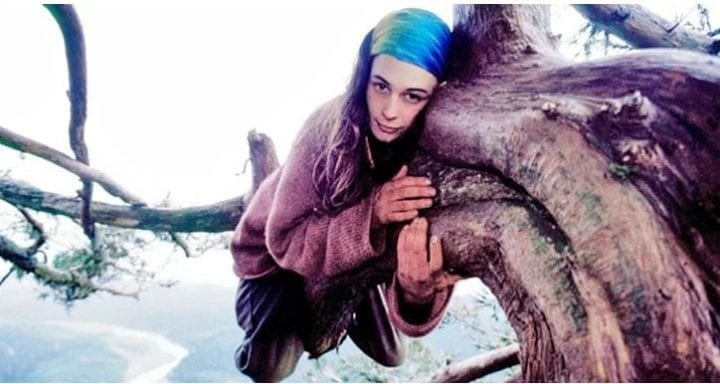
Recreoviral
The compromise stated that Luna would not be cut down, nor would any tree within a 200-foot radius. However, there were a few things the two sides struggled to agree on. The agreement still wasn’t signed and so Julia continued living her second year in Luna. At this point, did she even want to come back down?
23. Finally, Julia came down from the tree
Finally, on December 18, 1999, Julia and Pacific Lumber Company signed an amended agreement to get Julia out of the tree. Luna would not be cut down. Julia had saved, maybe not an entire forest, but at least one tree and its neighbors. Julia and Luna’s supporters had to pay $50,000 to Pacific Lumber, but the company donated the money to Humboldt State University.
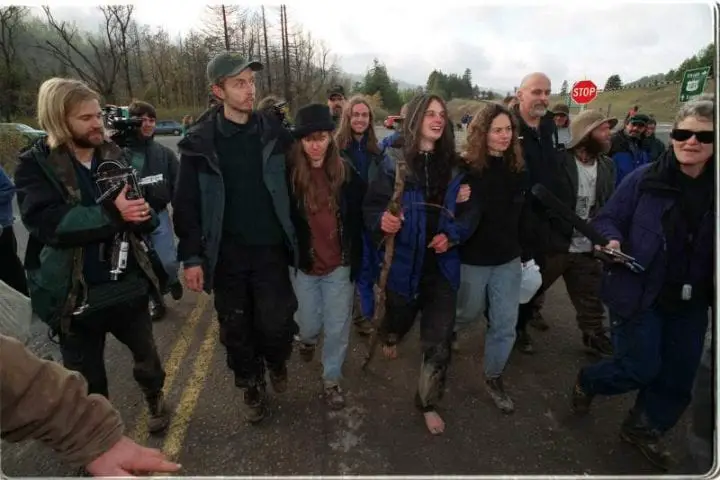
Press Democrat
Julia had to promise not to trespass on their land anymore, though she could visit Luna occasionally if she gave a 48-hour notice. Julia slowly came down from the tree. At the base, she collapsed on the ground, sobbing, “We did it.”
24. A year later, someone cut into Luna with a chainsaw
About a year after Julia climbed down, a vandal had the audacity to chainsaw into Luna’s trunk. Whoever it was got about halfway before stopping, but no one knows why. Luna still stood, despite the cut into its base. However, the tree was in danger because the trunk serves as a crucial transport of nutrients and water, as well as an anchor during heavy wind.
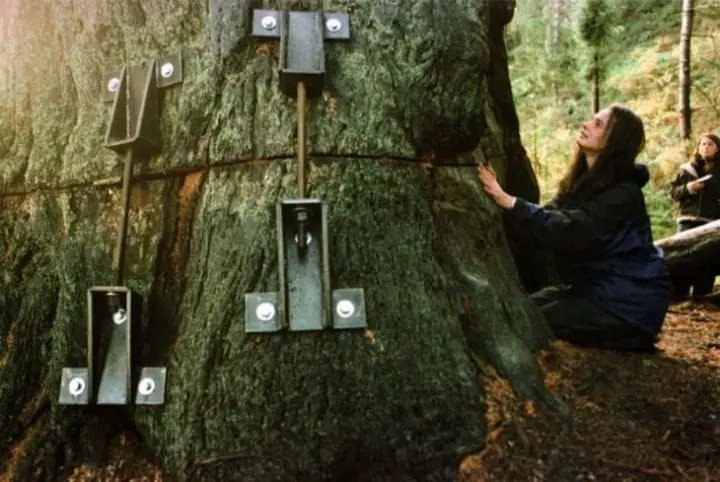
Recreoviral
Luckily, a group called Sanctuary Forest regularly checks on the tree. They found the cut and immediately started coming up with ways to heal the tree. A team of arborists, engineers, and biologists came up with a quick solution. They designed and created steel brackets to stitch Luna together and provide support in windy conditions. Luna the tree has healed and is doing well.
25. Julia continued speaking out on behalf of the forests
Since finishing her adventures in tree-sitting, Julia Butterfly Hill busied herself with giving countless talks each year. She had raised awareness of the threat to old-growth trees and became the world’s most famous tree-hugger in the process. She also wrote a book about her adventures in tree sitting called “The Legacy of Luna.”
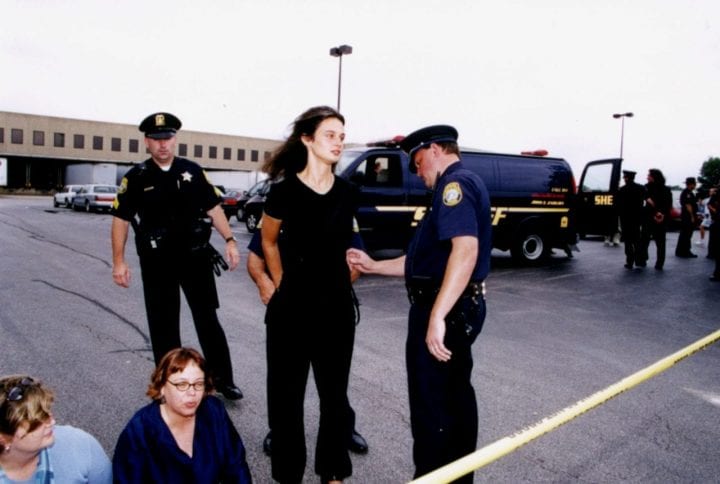
Getty Images
Setting foot on the ground didn’t keep her head out of the clouds, though, and Julia continued to work toward protecting forests. She lobbied California to ban logging of any old-growth trees. Plus, she got arrested for protesting the oil industry’s destruction of Amazonian forests in Ecuador.
26. Pacific Lumber went bankrupt and was replaced
However, Julia’s nemesis did not get a happy ending. Pacific Lumber Company went bankrupt in 2008 and a new company, Humboldt Redwood Company, was created and acquired their land. They’ve been significantly more cooperative with Sanctuary Forest, who protects the Luna Reserve, than Pacific Lumber ever was.
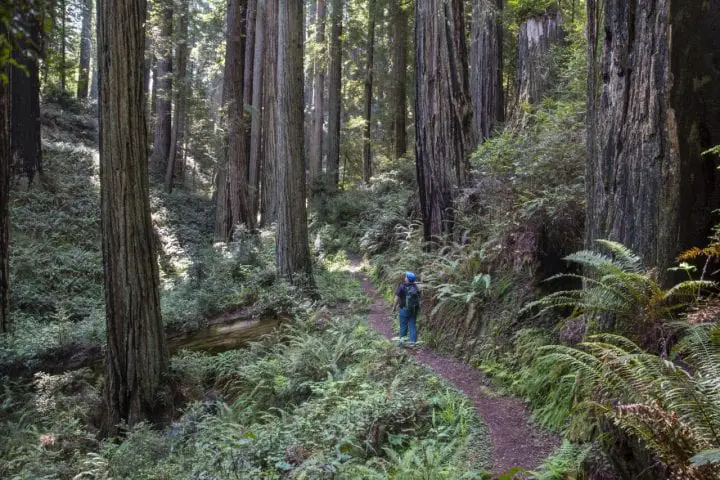
Wikimedia Commons
Julia, however, remained an inspiration to many environmentalists. “After I came down from living in that tree,” she later said, “I started realizing how literally every moment we make choices and every single choice changes the world — every single one of them.” She’s an icon among tree-sitters and still holds the record for the longest time living in a tree.
27. Trees are interconnected to each other via the Wood Wide Web
The way Julia talks about Luna (and even to Luna) may seem odd to most people, because after all, it’s just a tree, right? Well as different as animals and plants seem to be, recent research has shown plants have a lot more going on than people originally gave them credit for.
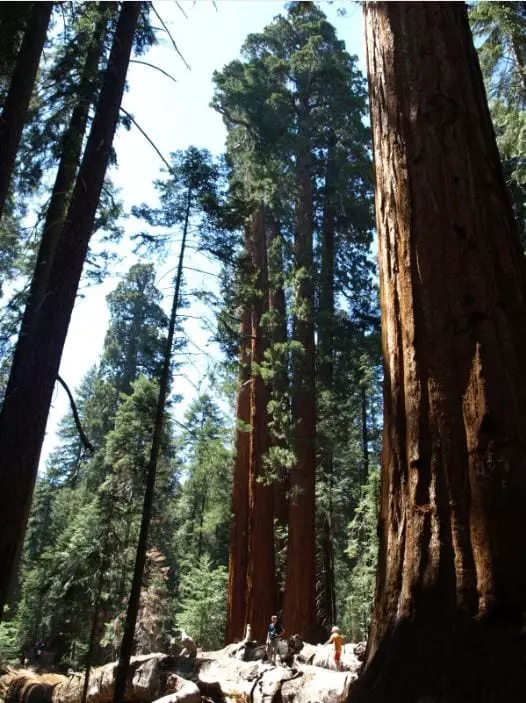
Pxhere
For example, in the soil under a forest lives a massive “Wood Wide Web.” A network of fungus connects all the trees, funneling nutrients from one to another. Dying trees will even send their carbon to young trees. Plus, the trees warn each other of danger via the fungus. Forests are deeply connected ecosystems.
28. Threatened animals live in the redwood forests
The Headwaters Forest of Humboldt County is home to several threatened and endangered species. One of which is the marbled murrelet, which is a seabird that only nests in the branches of old redwoods. The northern spotted owl and coho salmon also depend on the forest for their home.

Wikimedia Commons
Julia was able to see many of the animals living in the forest during her time in the tree. Whenever she dropped food, the flying squirrels would find it. At night time, after Julia blew out her candles, the little animals ran around making a mess, even going on her head.
29. Redwood trees are crucial for fighting against climate change
Young redwoods will often grow close to the parent’s base, sapping nutrients from the older tree’s roots and forming clusters called “fairy rings.” Perhaps because redwoods are so tall, they collect water from the fog in the air around them. Using the airborn moisture, they can grow two or three feet per year.
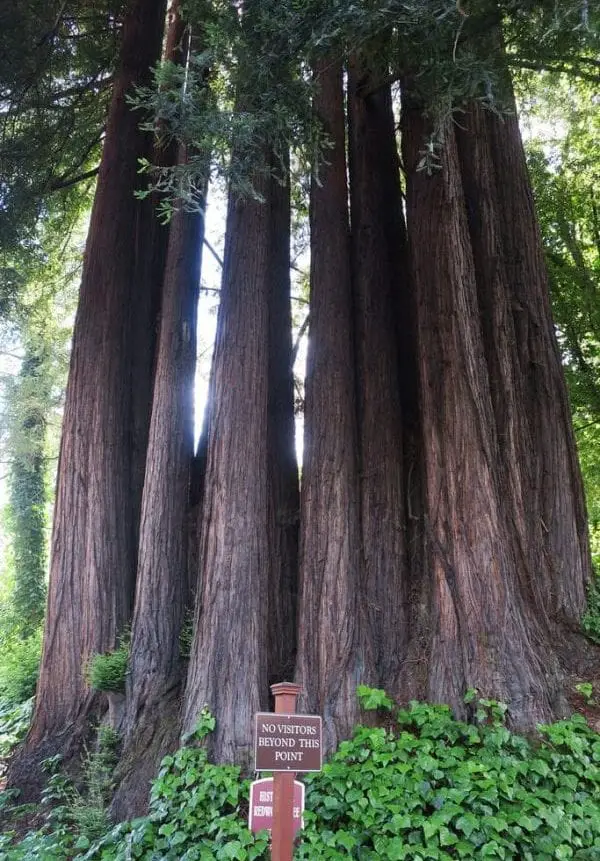
sarahstierch/Flickr
Climate change is decreasing the amount of yearly fog in Northern California and Oregon, but surprisingly, the redwoods are actually growing more than before. That is, you know, where they’re not being clearcut. Redwood forests are crucial for fighting climate change, though, because they store tons of carbon in their leaves and bark.
30. Forest managers have to chop down a few trees to encourage growth
Scientists are currently mapping the redwood’s genome (aka translating their DNA), which is 12 times larger than a human’s genetic code. They’re hoping to know a lot about the genetics of each tree in the redwood forests because encouraging the trees to grow means chopping some of them down.
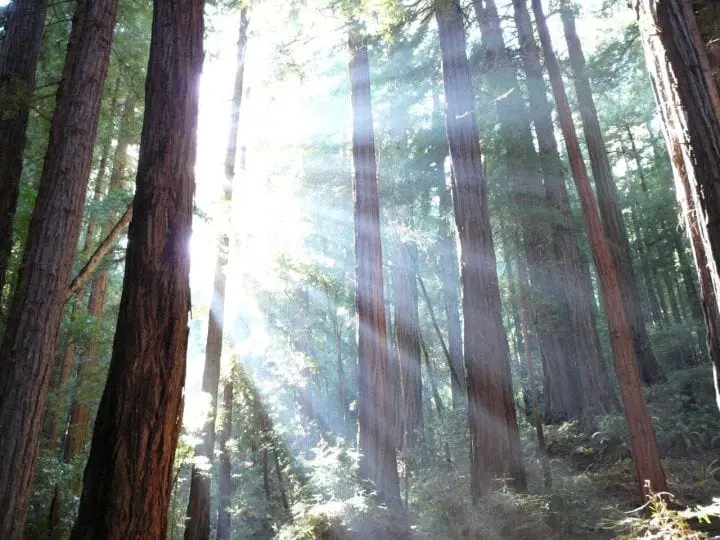
Wikipedia
As the young redwoods grow, they compete with each other and so the forest managers will cut back certain trees to let others flourish. Knowing which have the genes for drought or heat resistance will allow them to make the best decisions about which trees will be kept in the long-run.